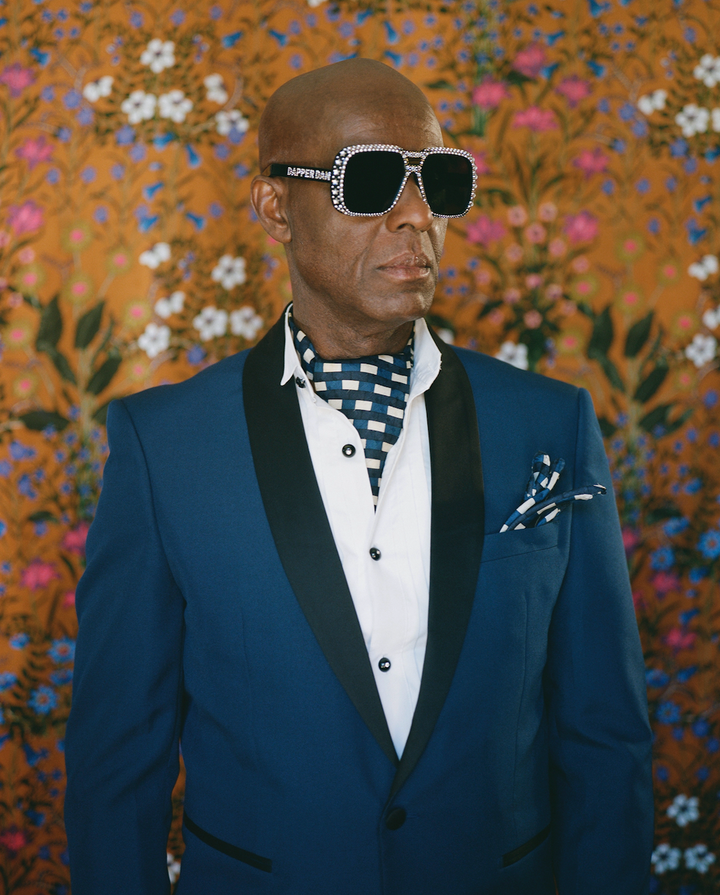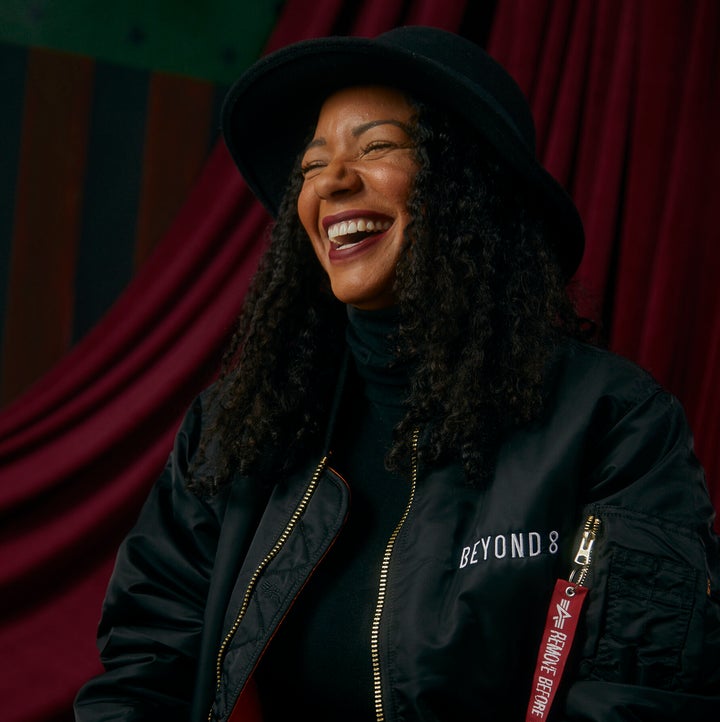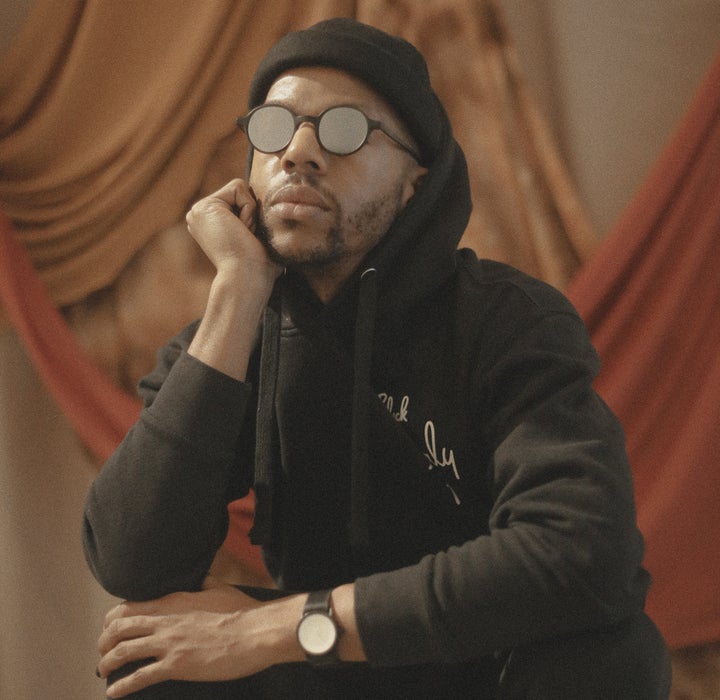
What does it mean to break the fashion system? First, you’ve got to acknowledge there is one. Pioneering designer Dapper Dan, runway producer Brittney Escovedo and history-making fashion photographer Dario Calmese discuss power, pivotal moments and why everyone’s talking about Pyer Moss.
After the opening of fashion month in September, the world is watching to see if the fashion industry can pivot away from its hallmark elitism. Critics have been calling out the industry as systemically unjust, capitalizing on cultural appropriation and the spoils of colonialism to sell aesthetics. But can a business that banks on identity politics truly evolve to a place of equal representation, and more to the point, will incremental shifts lead to deep-rooted change? The velvet ropes may have come down, but it remains to be seen if the fashion industry is poised to redistribute power for its long game.
To offer insight into how the reignited Black Lives Matter movement is affecting the role of Black creatives in the fashion industry, fashion insiders lay bare their experiences and look to the future in a new podcast. Developed by co-hosts Todd Thomas and Susan Barrett, Art Is A Verb is a 10-episode series where creatives rip apart the status quo in an attempt to reimagine a new system. Here’s what three luminary guests had to say.
“Because I was denied access to fashion and to the fashion industry, I had to create, as an orphan would have to, and survive completely on my own. So I had to make a name for myself, completely outside of the fashion establishment.”
- Dapper Dan
Harlem-bred couturier Dapper Dan, who is currently working in partnership with Gucci, said that the old fashion system is collapsing, opening room for outsiders to make a “tiny footprint” in its redesign. Dap describes the process for Black designers in terms of three roles on the quest for fashion identity, industry presence and a level of distribution necessary for success.
There’s the “economical orphan, there’s the economical adoptee and the economical one who’s being nurtured,” explained the designer. “The economical orphan is myself. Because I was denied access to fashion and to the fashion industry, I had to create, as an orphan would have to, and survive completely on my own. So I had to make a name for myself, completely outside of the fashion establishment.”
He credits hip-hop as a force that helped elevate Black culture in the public eye at the time his career was rising. “I was locally popular in terms of distribution, but globally popular in terms of identity,” the designer said.
“Now, the second state is the adoptee,” he continued. “The economical adoptees in fashion are those designers of color who represent major brands. They were adopted by those major brands to get a global presence. The problem with adoptees, like an adopted child, you always get treated like an outsider, you know, like the stepchild, and therefore, you can’t speak out as if you’re a regular member of the family.”
Dap said he skipped over the “adoptee phase,” securing global presence on his own, and went on to be nurtured, referencing his relationship with Gucci. “People of color who are outside of these fashion corporations had their own entity, which could be nurtured by these major corporations. ... That’s where I am now.”
Dap underscores how opportunity is so essential, whether you’re an emerging designer seeking a foothold in the industry or a veteran aiming to expand your presence.

Brittney Escovedo, the founder of Beyond 8, an international event production company, spoke to how important mentoring relationships are for young creatives. “You don’t have to have a trust fund to have an opportunity,” said the fashion show producer, who has worked with Rachel Comey, Reebok, Solange Knowles and Sephora. “You don’t have to come from an elite family or lineage in order to get an interview. I want to employ and hire people that are qualified, interesting and creative,” she said.
She referenced the 2013 lawsuit in which former interns successfully sued Condé Nast for neglecting to pay them a fair stipend. “That was the catalyst of fashion actually having to hold a mirror up to themselves and say we need to do things differently. We aren’t in this insulated bubble where we can operate in any fashion we want. It doesn’t matter how much do you weigh, where you come from, what your cultural backgrounds are. Everyone should be honored.” She added that fashion internships must be a source of authentic, dynamic learning.
Escovedo credits networking for a lot of her own success. Perhaps one of her most successful ventures is the production of runway shows for Pyer Moss, the label helmed by Kerby Jean-Raymond, recipient of this year’s CFDA Award for American Menswear Designer of the Year. When she met Jean-Raymond almost a decade ago, she said, “He didn’t have that official stamp of approval from the Vogues and The New York Times.” In helping to build his brand, she introduced him to everyone in her network.
“It was so exciting to put together [recent Pyer Moss shows like] Weeksville, King’s Theater and the Spring Studios show,” Escovedo said. Runway shows are a critical element of the brand, which is deeply rooted in storytelling, activism and theatrical display.

Renaissance man Dario Calmese, whose work sits at the nexus of art, fashion and academia, has consulted with Jean-Raymond as a show director over the years. He reflected on “that pivot point” in 2015 when Jean-Raymond’s “now infamous Black Lives Matter show ... showed 15 minutes of police brutality before the fashion show started.”
In explaining the artistic vision of that show, Calmese said, “What we are about is about telling the truth. Instead of skirting around our Blackness, we became even Blacker. And an entire community of people who look and think and are us resonated with that, because for the first time they actually saw themselves fully represented and elevated.” The show was a risk, and the brand reportedly lost buyers. But “you have to refuse the demands of capital in order to actually speak the truth,” he said.
Calmese made history this summer as the first Black photographer to shoot the cover of Vanity Fair, featuring Viola Davis on the magazine’s July/August issue, and is lauded for his documentary work on Harlem church-goer and sartorialist Lana Turner. He said his own work doesn’t shy away from potential retribution.
“Now I will also say that fashion itself, the system, can’t be divorced from its colonial history and its colonial past. I should also probably say this: There’s a difference between fashion with a capital F and fashion with a lowercase F. I’m interested in fashion with a lowercase F because there’s the fashion system, the fashion industry and then there’s fashion on the ground.”
Calmese reminds us that it’s OK to take joy in fashion even during a time of such profound ugliness. It too is part of the human story deserving of an audience.
Listen to Art Is a Verb, a Barrett Barrera Projects podcast produced by Olu and Company.